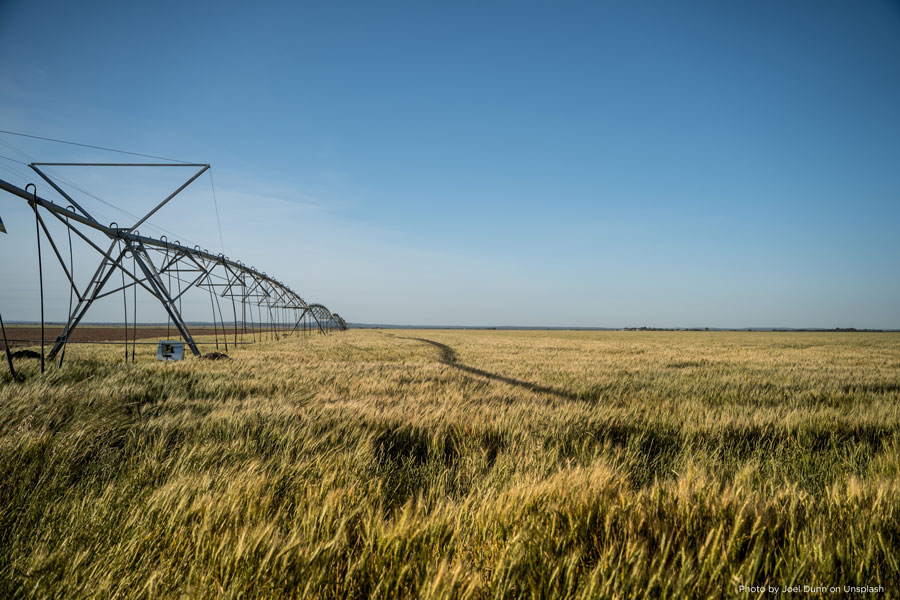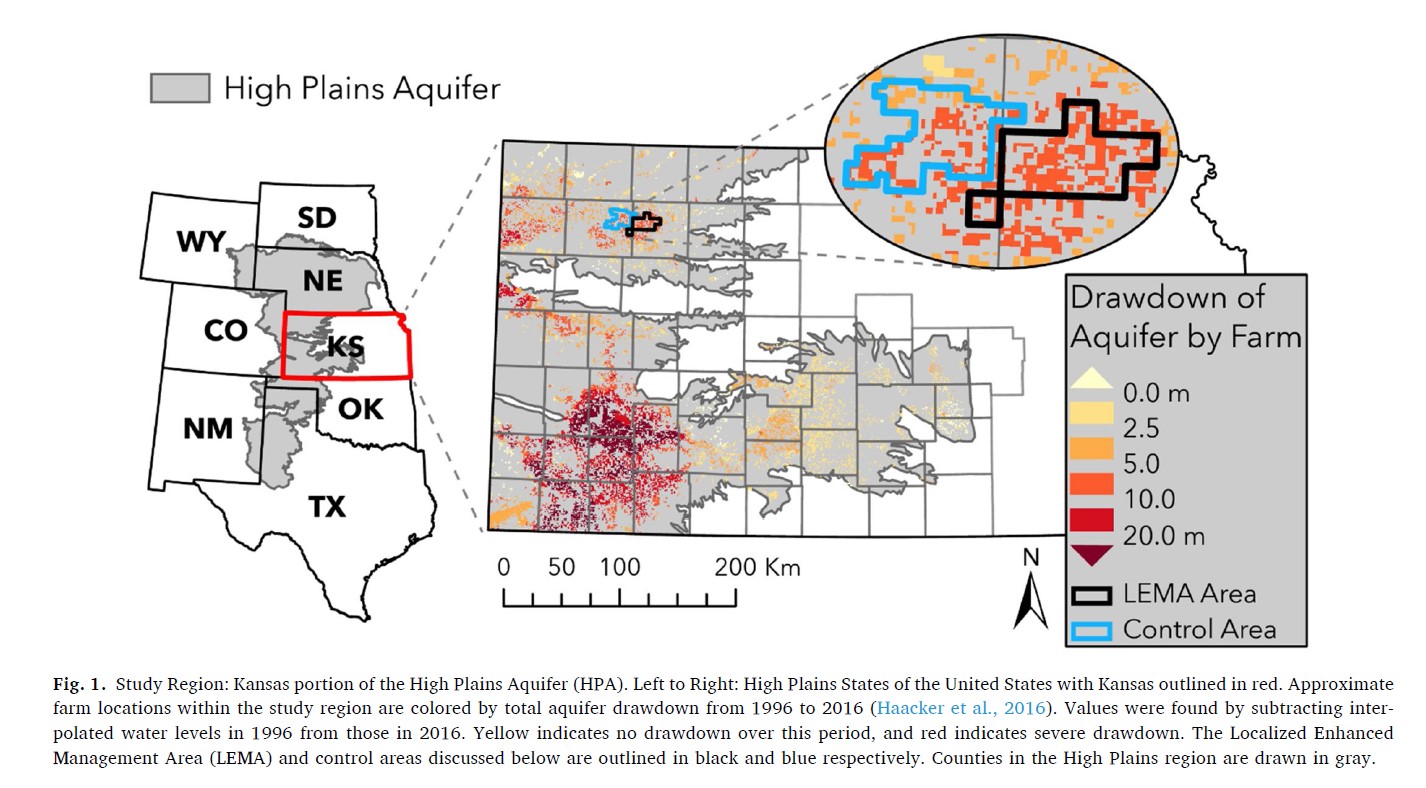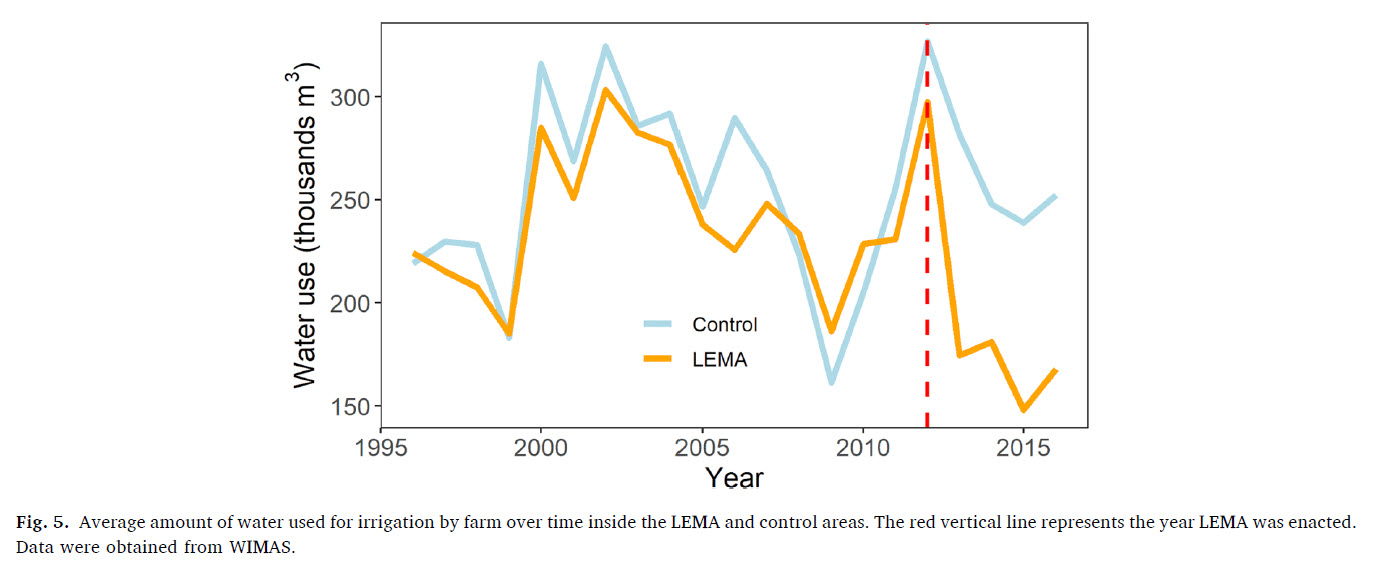Improving Sustainable Irrigation: When Promoting Efficiency Becomes Inefficient
October 5, 2021 - Diane Huhn

In recent decades, water scarcity has become an increasingly pressing problem across the globe. Academics and policymakers agree that instituting sustainable water management practices to protect critical resources is essential to addressing the issue. This is especially true in regions such as the Central United States, where shortages are causing immediate environmental, social, and economic harm. Yet, although it is generally easy to get stakeholders to agree that there is a problem and that something should be done about it, it’s often another matter to determine the best path forward. This is especially true when such plans impact the agricultural industry, which relies heavily on water for irrigation purposes. Researchers at Michigan State University are working to determine whether arming farmers with more efficient irrigation technology versus adopting locally-derived consumption limits is a better solution to reducing the depletion rate of essential water sources.
While state and federal policies have tried to encourage sustainable irrigation practices in many sections of the country for years, these efforts have not always been successful. One such area that has encountered water-management challenges is the grain-growing region of the High Plains Aquifer (HPA), a critical source of water for eight states. However, according to Adam Zwickle, an interdisciplinary social scientist at Michigan State University (MSU) focused on sustainable natural resource governance, a unique, grass-roots approach in rural Kansas appears to have uncovered a successful strategy.
Zwickle, and Brockton Feltman, a dual-major Ph.D. student with the Environmental Science and Policy Program and the Department of Community Sustainability at MSU, chose Kansas as the focus of their research not only because it is facing critical environmental and economic threats due to the depletion of the HPA, but because the state has implemented a series of Local Enhanced Management Areas (LEMAs) under the authority of their Groundwater Management Districts (GMDs). These management entities strive to strike a balance between stringent state authority and local control. Under these arrangements, farmers come together and agree to set cutbacks on irrigation.
“The information we were able to gather from the unparalleled well metering and water use reporting system available in western Kansas offered us valuable insights into individual producers’ irrigation behaviors,” said Zwickle. “The expertise of our interdisciplinary team, which included David Hyndman, Anthony Kendall, and Allyson Brady, enabled us to track changes in irrigation practices and groundwater levels over time in response to both technology and policy changes.”
“What we wanted to evaluate,” said Feltman, “was how two different water conservation approaches would affect irrigation practices among farmers and what that would ultimately do to impact aquifer sustainability in the long run.” The first approach involved helping farmers adopt more efficient irrigation equipment through subsidies for the improved technologies. The second approach utilized locally-approved, state-enforced caps on the amount of water individual farmers could pump from the aquifer combined with the threat of penalties for exceeding those caps. Our work is bringing new in-depth hydrological analyses combined with environmental social science theory to directly inform policymakers and natural resources managers about solutions that will improve the stressed ecosystem without causing additional economic hardships for users of these resources.”

What the research team found in the approach that promoted subsidies for the adoption of more efficient irrigation technology was a paradox. While many would expect an approach that emphasized efficiency would lead to less use of the aquifer’s resources overall, the opposite happened. As the team explains in their recent article in the journal Environmental Science & Policy, the situation is an example of the Jevons Paradox, a well-known concept in economics that occurs when technological progress or government policy increases the efficiency of how a resource is used, but the rate of consumption of that resource rises due to increasing demand.

As demonstrated in this case, farmers did initially reduce water use. However, the agriculture industry has long been economically incentivized to transform such savings into expanded irrigation or more valuable crops, which are often more water-intensive. According to Zwickle, “When Allyson Brady analyzed the data regarding water extraction, irrigated acreage, and saturation levels, she actually determined that those provided with subsidies to improve their irrigation efficiency generally increased total water use, expanded irrigated acreage, and did not slow their rate of groundwater depletion--outcomes that are obviously contrary to the intent of the cost-share program.”
While the team determined that funding the purchase of new equipment was more politically popular than restricting the use of water resources, it failed to reduce resource consumption. Although harder to implement, this latest research supports the idea that a locally-derived limit on water extraction, enforced by state-imposed sanctions, is the most effective approach to reducing water use and decreasing the rate of groundwater decline without negatively impacting the livelihoods of area farmers.
To learn more about this important work, please read “Sustainable irrigation through local collaborative governance: Evidence for a structural fix in Kansas” in the journal Environmental Science & Policy at https://www.sciencedirect.com/science/article/abs/pii/S1462901121002069.

